Late last month, we released a story about how Australia needs to tap into the prefabricated (prefab) housing market or risk lagging behind global competitors. Currently, the local construction industry contributes approximately 10 per cent, or $150 billion, to the nation’s GDP. Of this figure, the prefab housing sector makes up a low $4.6 billion (three per cent).
However, the sector is expected to grow at more than five per cent per annum until 2023, compared to the overall industry which is targeting a 2.3 per cent growth. According to Peter Newman, Professor of Sustainability at Curtin University, this growth is to be expected due to the many advantages of prefabrication.
“Prefabricated housing is a next generation housing construction industry, a game changer in cost of housing, competitiveness, efficiency and productivity,” said Newman.
“Without leveraging this technology, we will see Australia going backwards as overseas firms meet the needs of our local market.”
Prefab is a general term that applies to structural, architectural and services elements that have been manufactured off-site in advance. This ensures significant cost and time savings during construction, with fabrication often occurring parallel to site preparation activities.
Other benefits of modular buildings include reduced waste, safety, the minimisation of on-site wet-trades, as well as greater certainty during construction.
Prefab projects seem to have shaken off the stigmas of ‘makeshift’ and ‘second class product” too, especially as quality and attention to detail is rarely compromised, and in many cases, improved because of the factory controlled processes.
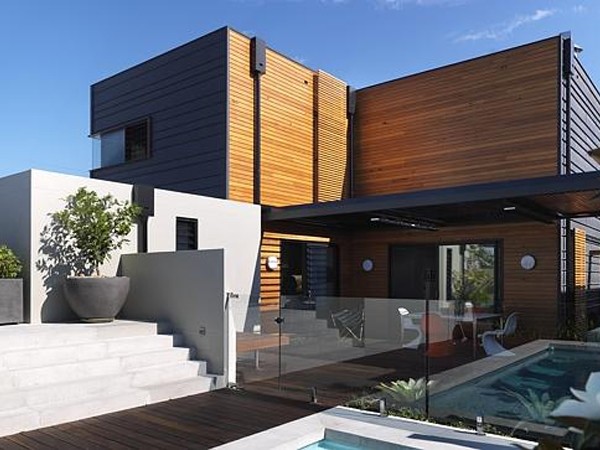
The Clovelly prefab house by Prebuilt was featured on Grand Designs Australia.
A $1.4 million home in Clovelly, which was built in just six months and delivered by Melbourne-based Prebuilt, is a great example of how modular buildings can be ‘higher end’ and aesthetically pleasing despite the ease and speed of installation. Here, we explore five homes in Australia that show off the quality of prefabrication:
ECO BALANCED 1 BY ECOLIV AND BEAUMONT CONCEPTS
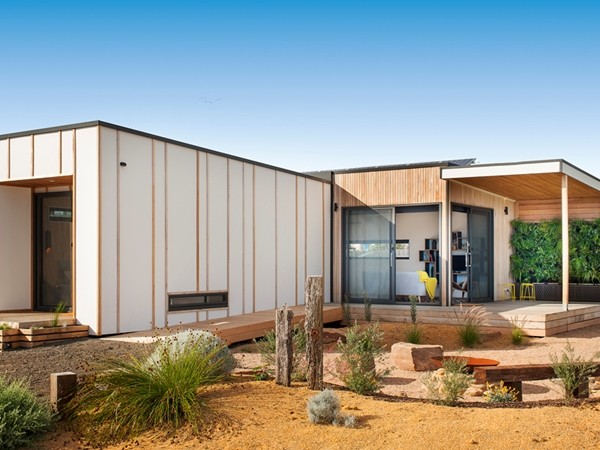
This display house in Victoria was built to demonstrate a range of upgraded fixtures and fittings for Ecoliv’s existing home on site. It consists of two simple volumes juxtaposed to provide functional spaces within an economical footprint. Achieving an 8 star thermal rating, it includes a 2.0Kw grid connect PV power system, solar hot water system, and zoned living and sleeping areas.

The home’s modular design meant less site and noise disturbances, with the prefabrication process reducing construction wastage by up to 52 per cent. Eco Balanced 1 was also transported and hydraulically lifted to Melbourne’s Federation Square to participate in “The New Joneses Project”, part of the Sustainable Living Festival 2014 – all while Sunrise presenter Edwina Bartholomew lived in the house.
Images: Warren Reed
THE ESPLANADE BY ARCHIBLOX
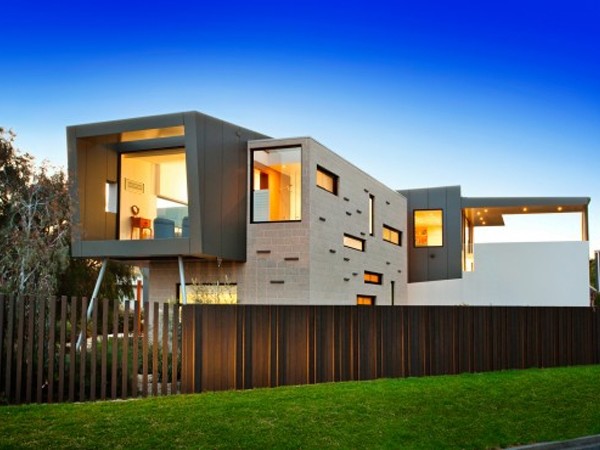
ArchiBlox offers a variety of prefab homes to suit different locations, including a Rural, Urban, or Beach House. The Esplanade, a holiday home in the coastal village of Iverlock in Victoria, is one of their custom projects, and built for a couple who were looking to retire in this house. However, they also wanted more rooms to accommodate for their children and their families during the holidays.

A two storey dwelling, with the living area and master bedroom on the top floor, the house features an entertainment area that opens out to a pool.
Images: ArchiBlox
STRADBROKE ISLAND HOUSE BY HAPPY HAUS AND DONOVAN HILL
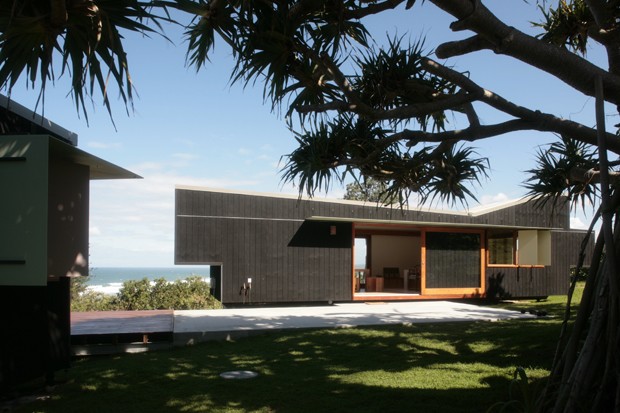
Partnering with architects Donovan Hill, Happy Haus created a series based on the design principals of open-plan living and connectivity. This home in Stradbroke Island, Queensland, is located on top of a hill with expansive views over the main beach and consists of two pods. One is a central hub that includes the kitchen, bathroom and living/dining area, while the second pod is an open plan sleeping/bedroom pod with custom shelves that act as storage and a privacy screen that can be configured in various ways. Both pods are linked together with timber decking.
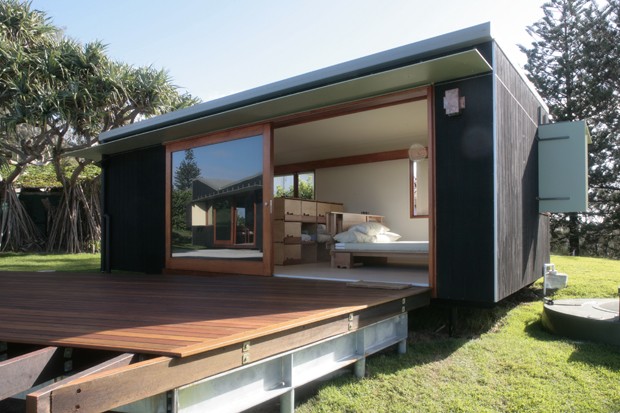
Constructed in six weeks and installed in one day at just $220,000, the house won the Queensland House of the Year, and was one of 19 designs selected for the Bushfire Homes Service after the Victorian bushfires.
Images: Happy Haus
COTTESLOE HOUSE BY MODSCAPE

This four bedroom residence, located in Cottesloe, Western Australia, is home to a young family who had moved from Switzerland. The design by Modscape adheres to the ideology of form follows function, with the team working around the constraints of a steep site, and creating a garage that addresses the street as the façade of the house.

Organised in two floors, the first level of the house takes full advantage of the sweeping views and Fremantle afternoon breezes. A main circulation area and the master bedroom look through to a double height internal courtyard that protects an existing tree, while allowing light to penetrate deep into the home.
Images: Modscape
KENSINGTON RESIDENCE BY ARKIT
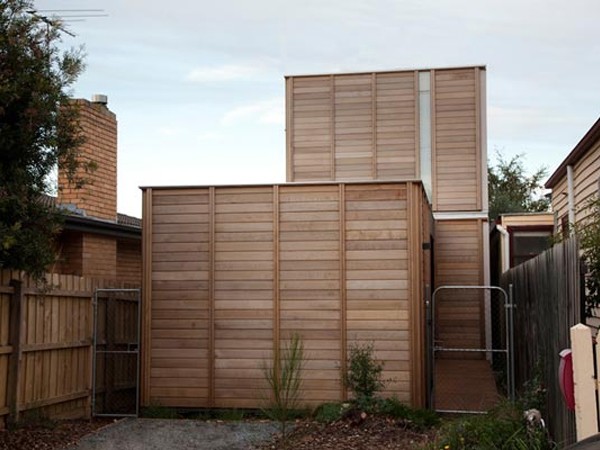
Completed in 2011, this project is an addition to an existing Federation Bungalow in Victoria. With a building area of 135m2, it comprises two bedrooms and a study, and was constructed onsite in two weeks. Components were prefabricated in 12 weeks, in three completely finished sections.

The design prioritised a north orientation and the maximum penetration of natural light within a tight site, and includes a heated concrete slab, recycled insulation, double glazing, and FSC and SFI certified timber.
Images: Arkit

